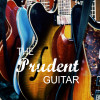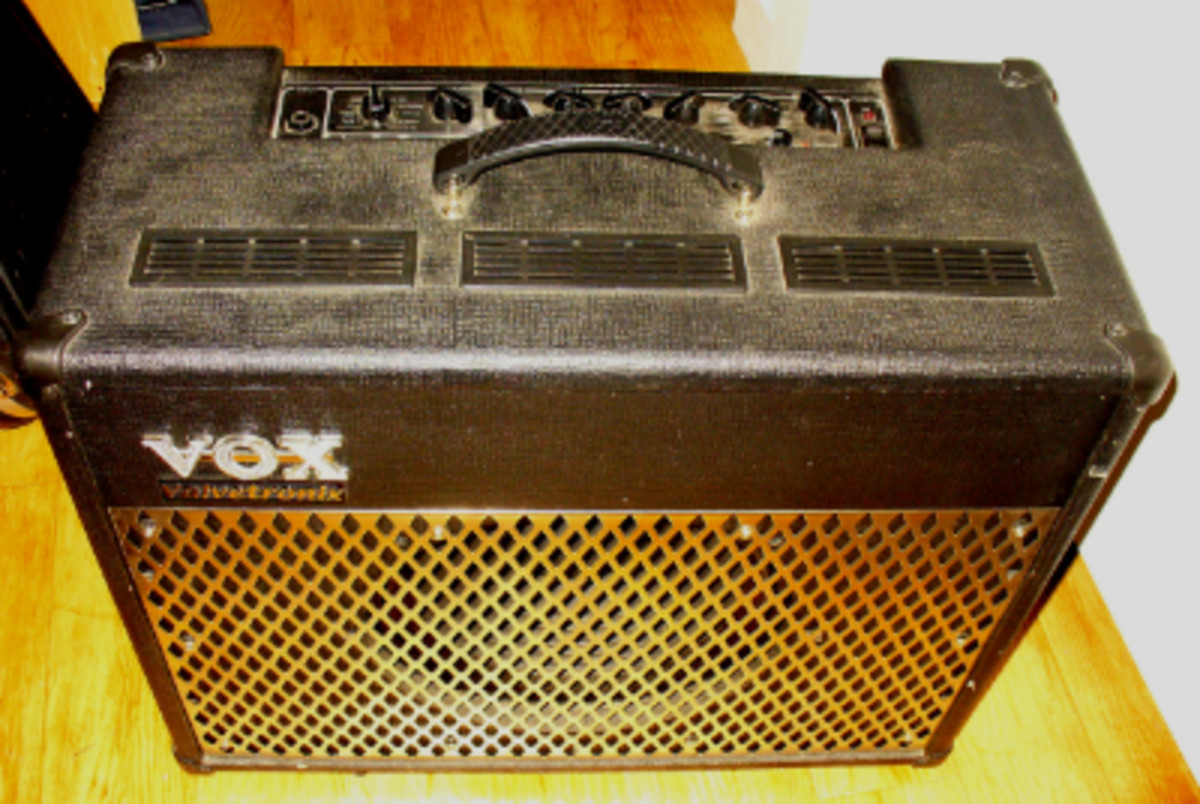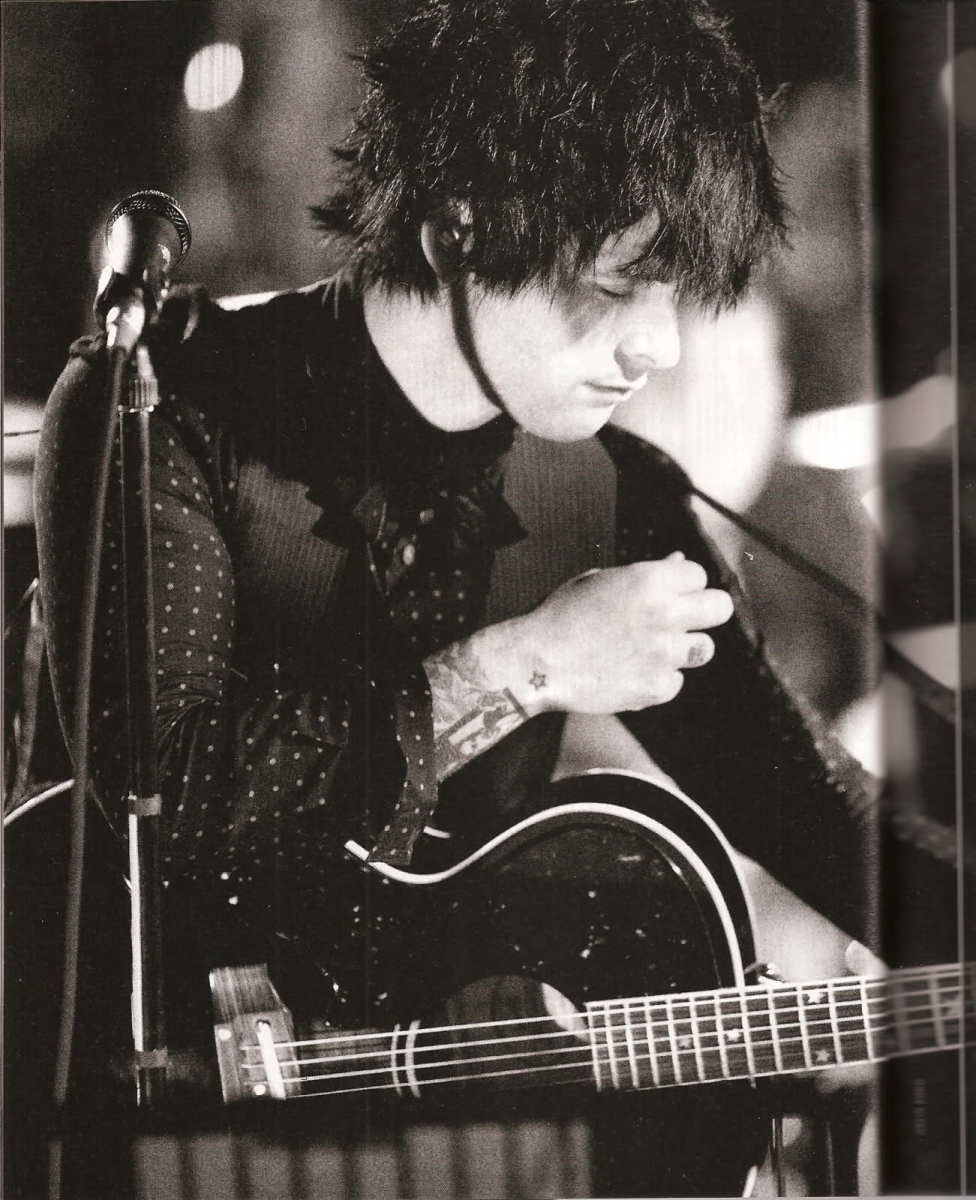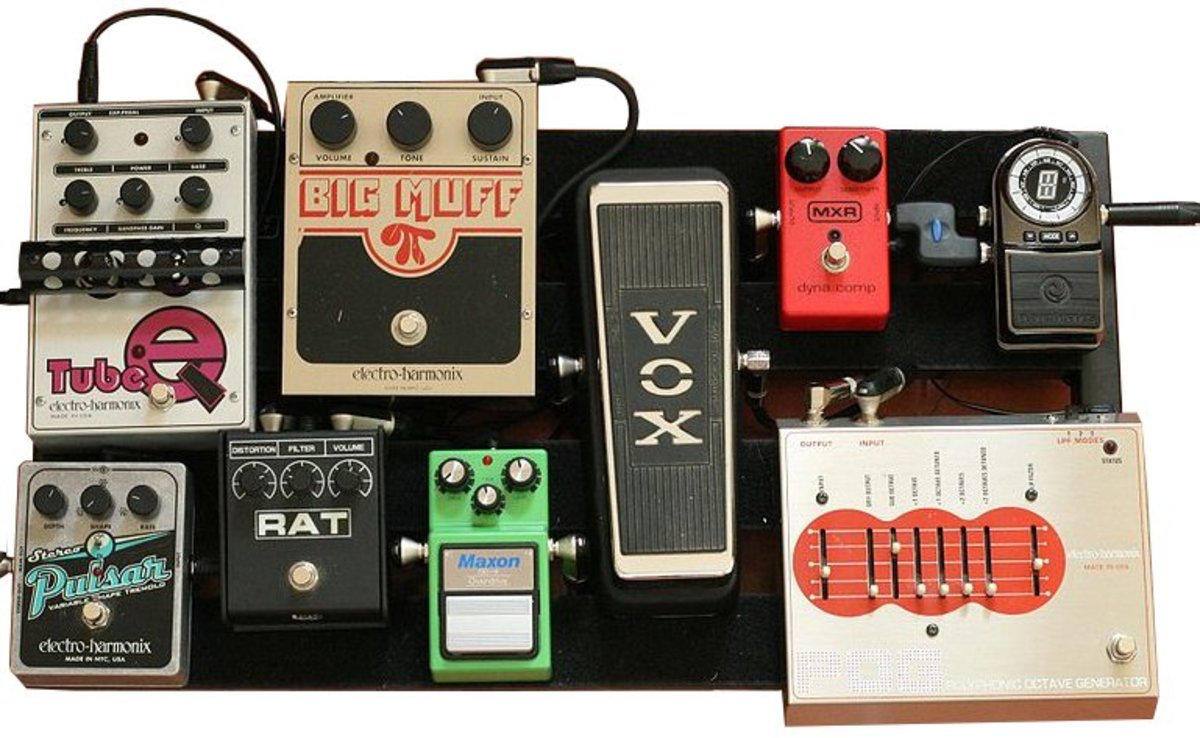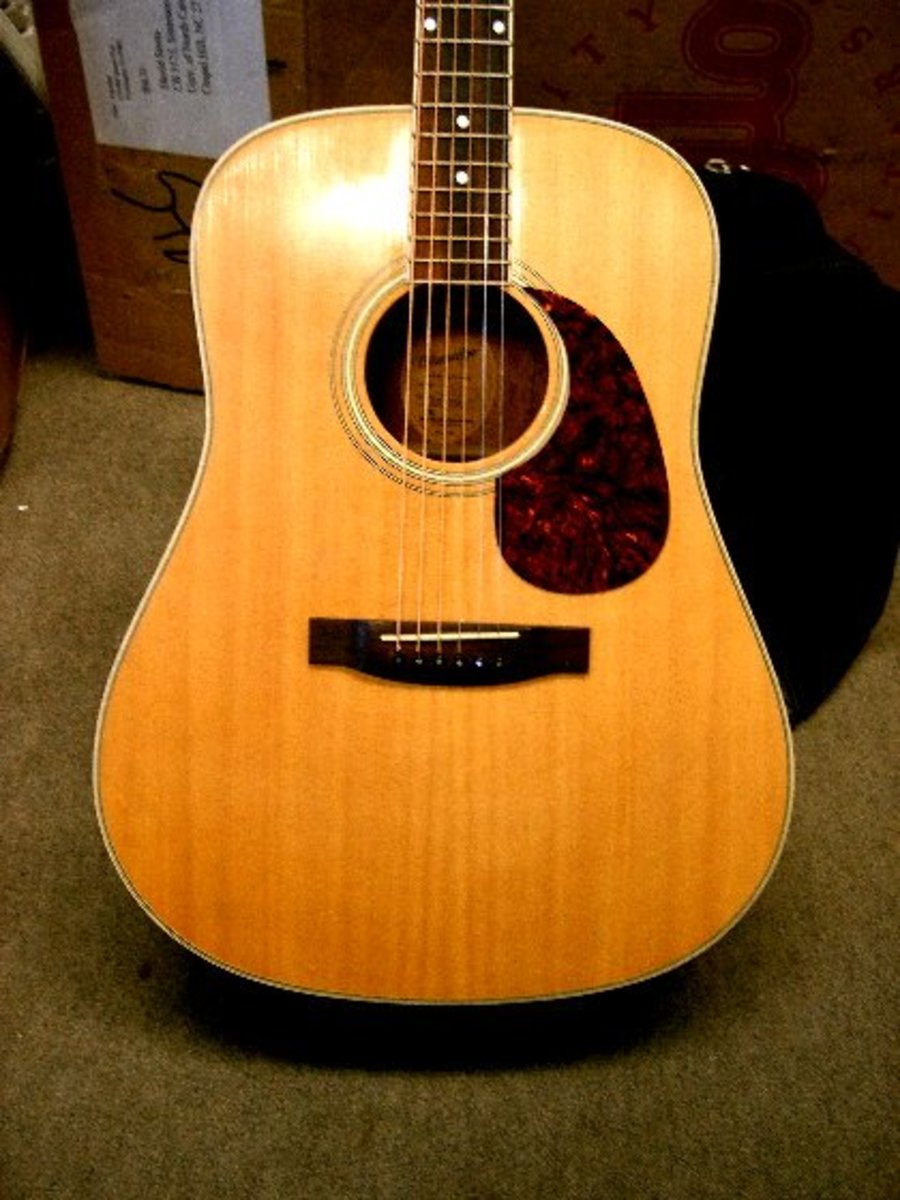Roland JC-120 Jazz Chorus Combo Amplifier Review
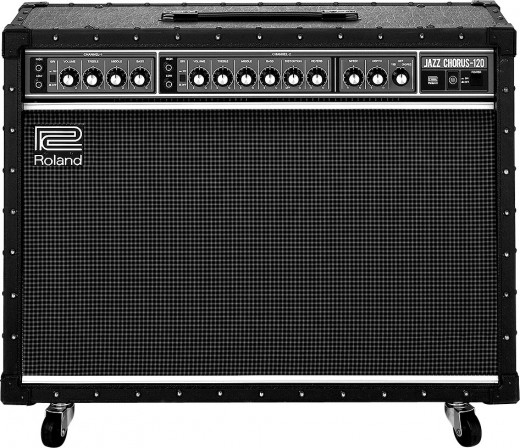
Overview
Standard Retail Price: $1,199.00
Typical Used Price: $350 to $650
Features: 120 watts; two 12-inch Roland speakers; two inputs (High and Low); two channels plus chorus effect; Line Out (L/Mono, R); footswitch (controls Chorus/Vibrato, Reverb, and Distortion); Effect Loop Return (L/Mono, R); four caster wheels.
Controls: Both channels have a "Bri" (bright) on/off button, as well as Volume, Treble, Middle and Bass knobs; channel two adds Distortion and Reverb knobs; the Chorus section includes Speed and Depth knobs, as well as a Vib (vibrato)/Off/Chorus three-way switch.
Famous Users: James Hetfield (Metallica); Albert King (solo); Brad Laner (Medicine)
Further Information: The Official Roland Website
Overall Value
First Impression
Back in the mists of time--actually, not so long ago in 1975, Roland rolled out the first of its legendary 120-watt stereo solid state amplifiers. In fact, the amplifier is arguably not rated at 120 watts at all, but rather two distinct sides which are each capable of pushing 60 watts. I will leave the debate over the true wattage to the experts. Suffice it to say, getting one's hands on a Jazz Chorus amp is an experience unto itself, even today.
From a cosmetic standpoint, Roland managed to produce one of the most modern-looking designs of all time. The white grid lines on the grillcloth hinted at the digital future, while the tolex is held firmly in place by a series of metal rivets. The amp stands on four caster wheels (making transportation easier, considering how much JC-120s weigh) and its physical width perfectly mirrors the huge sound that issues forth from the Roland's speakers.
I mentioned the Jazz Chorus's weight, and it's worth noting that this is a very heavy combo amplifier, especially considering it only has one handle located directly on its topside! Honestly, the one I owned competed with my old Vox AC-30 TB, which tipped the scales at around 75 pounds. The modern JC-120s clock in at 62 pounds, which I'm fairly certain is a little lighter than the earlier models.
Ease of Use
Depending on which era your Roland JC-120 was manufactured in, it may have slightly different features. Regardless of when it rolled off the conveyor belt, chances are the amps are close in terms of functionality--which is to say, very user-friendly and easy to operate.
The control panel is laid out intuitively enough, with one big bonus being separate EQ controls for each of the two channels. (A shared global equalization setup seems to be a fairly common failing in the multi-channel solid state amplifier world.) The modern JC-120s currently in production also feature a "Bright" on/off button for each channel, but the model I reviewed was manufactured sometime in the early-to-mid 1980s. I know this because it had silver metal toggle switches for the power and Vibrato/Off/Chorus controls, rather than the newer plastic switch and knob. Ergo, it should be noted that I have no experience with this particular feature, but it looks fairly simple to utilize.
The JC-120's 3-button footswitch is similarly intuitive, with one plunger-style button that toggles back and forth between channels one (clean) and two (distortion), another to turn the reverb on and off, and yet another to activate the vibrato/chorus. There is no way to switch between these two effects on the footswitch; one has to set the knob on the amp for either effect, and then either turn it on or off using the pedal. A masterful bit of foresight on Roland's part was to make the cable that extends from the back of the footswitch to the back of the amplifier more than ample in length--I don't know the exact measurement, but I've yet to play on a stage where I had to move my amp closer for fear of it not reaching.
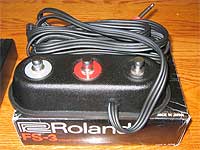
Performance
I always like to review gear in the three different contexts in which a user may find him or herself: solo practice or writing sessions; live band work (rehearsals or shows); and recording sessions. Unfortunately, I have never utilized the JC-120 in the confines of a studio, so I cannot attest to how easy or difficult it would be to obtain good sounds using the amplifier. However, based on how easy it was to get a bold, high-quality tone in each of the other contexts, I would posit that a Jazz Chorus amp is probably quite a useful tool in a recording situation.
Also, in the interest of full disclosure, I should document upfront one of the amp's biggest drawbacks: its distortion channel. It's been remarked upon before and in more colorful language than I'll use here, but the JC-120's Channel 2 is about the worst example of an overdrive sound that has ever made it to the mainstream market.
Again, where my amplifier was a vintage model, I can't give any feedback on the tone of current Jazz Chorus dirty sounds. But I can confidently state that with my older JC-120, a decent overdrive pedal was absolutely essential to playing rock music or any other form where a gritty sound was required. It's quite mysterious when one considers that Roland is Boss's parent company, and that Boss has produced some of the best-sounding and biggest-selling overdrive and distortion pedals of all time. Perhaps the company didn't want their amplifier's onboard dirty tones to compete with their effects pedal line? It's impossible to say, but it seems likely that even if the Channel 2 sound was created accidentally and then later tweaked via the pedals, to not improve the sound as time goes by indicates that the company is pushing users toward purchasing other products designed and built by the same manufacturer.
With that said, the amp performed admirably in the contexts in which I did manage to use it. When I would fire it up and use it to practice at home, the solid state technology ensured that the tones were fairly consistent, even at low volumes. With my trusty Boss SD-1 Super Overdrive pedal at the ready at all times (it sounded fairly good run through the JC-120's solid state circuit, without getting too much of the "fizziness" that often happens when running a dirtbox into a SS amp), I was able to get full-sounding tones at bedroom levels due largely to the independently-powered speakers, which can push a lot of air.
Another important aspect of the JC-120 that readers should take note of: this amplifier's clean channel is clean. It's cleaner than the cleanest amp you've ever played through in your life. Ergo, some folks will find it a little harsh-sounding, although it's entirely possible to sculpt a round, full sound using the EQ knobs. Instead, what they may be reacting to is the amp's ability to reveal the true nature of our playing by accurately representing what we're doing.
See, the sound of heated tubes tends to create a kind of smearing effect over one's tone, which also creates that warm, ever-so-slightly hazy feel that comes from a cranked tube amp. Fluffed notes or quick slurs can be sneaked by unnoticed with a quick enough hand. But the Roland Jazz Chorus's solid state technology is totally unforgiving. If you make a timing or fretting error, it WILL be audible.
This brings up an interesting point, though. I personally credit playing exclusively through this amp for about a year straight with making me a better player, because suddenly there was no way to disguise my mistakes--which led to me making less of them. Hence, as a practice tool, the JC-120 is invaluable, if you can tolerate having your flaws laid bare before you.
In terms of live applications, Roland's flagship amplifier was a mighty, mighty ally. It turns out that one of this amp's great strengths is the sheer amount of volume on tap. I can say without any exaggeration that turning it up over halfway in my band's practice room had a tendency to make me feel slightly ill, so headsplittingly loud was the peak volume. However, this made it an excellent amp in live scenarios where perhaps the PA was only sufficient for running vocals. I was amazed at how the JC-120 seemed able to keep up with frighteningly loud drummers and half-stack amplifiers twice its size. And yet, due to the solid state guts, the Jazz Chorus never lost its clean headroom--the signal was clean and pristine, no matter how hard it was being pushed.
Now for the part you've probably been waiting for: an assessment of the built-in chorus effect. Let me preface this portion of my review by saying that I never found a use for the onboard vibrato, which is activated via the same control knob as the chorus. It was by no means a bad sound, it just didn't seem as applicable as the chorus.
But, oh, the chorus. Rich, lush-sounding shimmering notes cascading out of two cranked, pristine stereo speakers is really something that has to be experienced in person to ever really understand. Then and only then will you begin to grasp why some players who started using said effect really never stopped, making it a cornerstone of their sound. It's a one-trick pony, for sure... but that is one damn good trick!
In fact, if you get the chance to spend some time with a JC-120, you'll find yourself experimenting with this effect a lot. It suddenly becomes tempting to apply the sound to every song in your repertoire, whether it was there in the first place or not. However, to make the most effective use of the Jazz Chorus's most famous tone, remember the old phrase that says "restraint is the better part of valor." Unleashing the head-trip waves of chorused guitar sound strategically rather than constantly can really add to the impact.
I will, however, state for the record that I have never come across any standalone chorus effect unit that I liked anywhere near as much. In fact, I'm somewhat biased against this effect due in part to its overuse in the 1980s. But the sound that rolls forth from the JC-120 is pretty hard to deny.
Conclusion
I eventually gave up the JC-120 to explore the world of hybrid amplifier technology, but my two years with it still linger in my memory fondly. I would definitely like to acquire another (vintage 1980s) one someday.
Roland's defining achievement in solid state amplification has never really been matched, and if you can find a used one with a silver metal power switch (indicating it's a vintage model) that is in good condition, I would strongly suggest that you at least consider purchasing it. The clean sound is a double-edged sword, but playing through one of these amps for a while can certainly make one a better player, as there is no masking the truth with the JC-120's clean, accurate representation of your sound.
The JC-120, as stated previously, is certainly loud enough for live applications of almost any kind; guitarists in almost any genre will have no problem keeping pace with a full band when running through a Roland Jazz Chorus. This makes it fairly versatile, although the Distortion channel's sound is so awful that you'll need to have a good overdrive pedal handy--preferably one that is known for working well with solid state electronics. Finding an effect that suits your needs can be tricky, but is by no means impossible.
From metal to shoegaze to ska, the JC-120 has featured on thousands of recordings and stages over the years. It's a bit of a one-trick pony, but its trick is so cool that it's easy to imagine a player basing their whole sound on the admittedly limited range of the Jazz Chorus's palette. Take one for a test drive sometime, you might be surprised to find that in specific applications, it'll hold its own against classic tube amps noted for their clean sounds.
